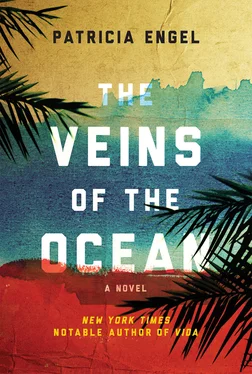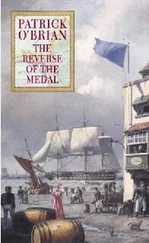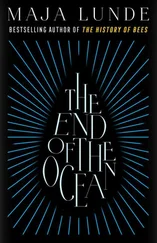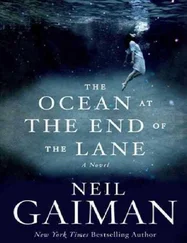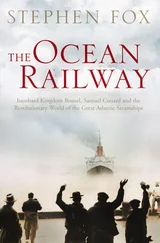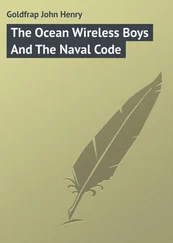Nesto and I sit together in the dirt until my breath becomes even again and the doom of the day seems to lift with the noon sun rising high above us.
He doesn’t press me to say more, or tell me what he thinks about anything. He only sits with me, the gentle pressure of his arm around my back, and me, finally at ease enough to let myself lean into him.
There were no especially happy Christmases in my past. They were always marks of something broken in our lives. My mother told me that during our first holidays in this country, she yearned for home, the music, the lanterns that lined the streets of Cartagena, candles lit in every window, from the sixth of December to el Día de los Reyes. After Hector was gone, although we always went to misa de gallo at Our Lady of Divine Providence and celebrated with Tío Jaime and Mayra, the day was just another yearly reminder of our dishonor. And when Carlito left us, it only cemented our sense that as a family, we were a failure.
I decide I should go back to the cottage but Nesto insists there is nothing but my own thoughts waiting for me there and I should stick with him for the day. It happens that he gets an urgent repair call from the dolphinarium down on Cloud Key because it’s Christmas and their regular fix-it man is taking the day off to be with his family. Lolo is friendly with the manager of the place and put in a good word for Nesto since he’d done some work repairing tanks and plumbing at the Acuario Nacional back in Havana.
The dolphinarium is supposed to be some kind of sanctuary, not your typical aquarium, all about bucks and flash, or one of those shabby spots littering the Keys, mom-and-pop businesses built out of canal houses with a pair of captive dolphins for tourists to swim and take pictures with. The place claims it’s no water circus, but a well-funded private research facility with a mission to better understand dolphin intelligence. But it still looks to me more like an aquatic farm, with pens carved out of Florida Bay by chain-link fences, joined by a wooden walkway from which visitors can stare down at the dolphins, and a wooden shack on a tower at the center of it all that the staff uses for broader observation.
Before you make it out to the dolphin pens, you have to pass the sea lion enclosure, and before that, a long artificial river coiling around the front of the property, with walled-off sections of barracudas, stingrays, and sea turtles. The turtle stream is the one with the problem today, with a backed-up filtration system.
Nesto and I watch the turtles while the manager, Mo, a bald guy in his fifties with the body of a fifteen-year-old, explains the problem. There are at least a dozen loggerheads and leatherbacks, and among them, three or four wearing partially inflated life jackets like they’re part of a gang, bobbing through the current, unable to dive deep or glide as smoothly as the turtles without jackets. I ask Mo about it and he explains that before hatching, those turtles’ eggs were disturbed while in their nests, probably by beachgoers, causing air pockets that made the shells grow deformed, top or bottom heavy, which, without the jackets, would make the turtles sink and drown.
Just a few days ago, Nesto told me about his kawama-catching days during the Special Period, when he’d drive east to Corralillo where local fishermen draped a net across the bay at Playa Ganuza to trap turtles as they came in from the sea to lay their eggs. Nesto would arrive in the early morning with a scuba tank borrowed from Lolo, and dive under to bring up whichever turtles had already drowned in the netting. “You can never kill a turtle,” he told me, “because they can be the size of tables, strong as bulls, and it would also be cruel to the animal and disrespectful to their guardian, Yemayá.” So he’d pray to the orisha, explain his family’s hunger, thank her in advance for any turtles she would give him since he knew they were sacred to her, and promise to pay the debt as soon as he was able, because he said Yemayá can have a terrible temper if you take from her without asking, but she is also fair and understanding. He waited for the turtles to drown from the struggle, and once he carried one to shore, the fishermen chopped it up for its meat and took their share, throwing the shell out to sea so there would be no trace of it for the police to find and arrest or fine them for stealing from the ocean.
Nesto took his portion of the meat with him back to the capital to sell on the bolsa negra for three dollars a pound. His entire family could live off the profits of one turtle for over a month.
“Pobres tortuguitas,” I’d said, with a horrified expression.
“You don’t know hunger, Reina. You don’t know the things people will do to feed their family. I hope you never know.”
And here he is now, ironías de la vida, assigned to fix the pump so these lucky turtle refugees in life jackets can have a nice habitat.
While Nesto gets to work, I walk around the rest of the facility. There are just a few tourist families roaming around, gathering at the big lagoon up front where a trainer is getting ready to do some kind of show. I walk down the stone path toward the back of the property past a pen with the pair of resident sea lions sunning themselves on a wooden platform. And just past their pen, there are nearly a dozen other fenced enclosures, each holding two or three or four dolphins.
I walk from enclosure to enclosure till I come upon one where a guy in a wetsuit sits on a platform with a dolphin poking out from the water at his knees, doing hand motions to which the dolphin responds with some behavior like nodding or shaking its head, and the wetsuit guy rewards it with fish from a bucket at his side.
I wander farther up the dock to look in the other pens. Dolphins swimming around, some just parked by the dock with an eye on me or another visitor, others doing quick loops around the fence periphery. In another pen, two mother dolphins swim with their babies in their slipstream, and I stand for a while watching them press against each other, slicing through the soft gulf tide penetrating the holes of the fences.
I’d tell Carlito about this place if he were still alive.
When he died, the hardest thing to get used to was the end of his phone calls. I could count on them once or twice a week. The buzzing recording of the prison announcing a collect call from an inmate, my accepting the charges, then his voice: “Reinita, hermanita. Tell me about the world.”
He joked that I was his scout, his eyes on the outside, his little guerrera on the front lines. I felt like an informant, relaying to him entire conversations I had with other people, a fuller kind of gossip because he’d have me set scenes, describe a place in detail. He trusted my vision of the world, the way I told stories with my own judgments interspersed, because our first impressions of life had been shaped together; we’d been taught the ways of humanity by the same misguided tribe, were fruit of the same knotted and twisted family tree, and had walked through the world together until he lost his place in it.
He feared he couldn’t picture life beyond the prison walls anymore, that his memory was unreliable, and said he was forced to live in his imagination like any loco in an asylum. In prison he could watch some TV and movies, but it only made him more aware of his shrinking picture of life and the fact that he’d likely never walk under the open sky again.
I knew he gave up some of his rec time to call me. The prison chaplain once advised him that if he declared himself a smoker, he could negotiate to get an extra thirty minutes in the kennel each day. But that would require me to deposit even more money in his commissary account, and I was already putting in as much as I could afford just so Carlito could buy bags of chips, cookies, or powdered soups, anything to avoid eating the prison food, and so he could keep calling me collect, though the calls always cut out before we’d have a chance to say good-bye.
Читать дальше
